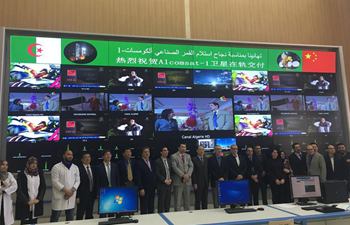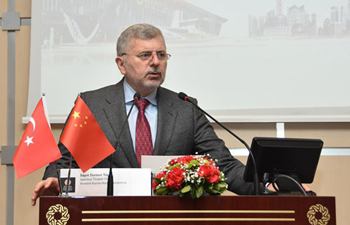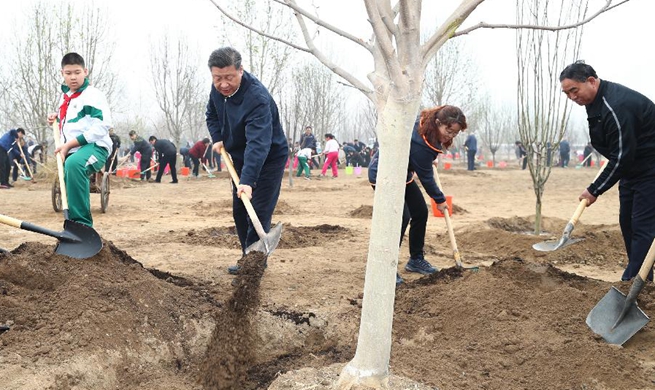LOS ANGELES, April 2 (Xinhua) -- Researchers at Northern Arizona University (NAU) mapped out how far-reaching the effects of trade tariffs imposed by the Trump administration on steel and aluminum could be for U.S. communities and industries.
According to a new report of NAU's official website on Monday, the research was made by Benjamin Ruddell, an associate professor in the School of Informatics, Computing and Cyber Systems (SICCS), and other professors.
It is a part of the National Science Foundation-funded FEWSION Project led Ruddel, which maps the U.S. economy's food, energy and water systems and their connections to the broader economy and environment. FEWSION scientists also mapped the largest international trading partners for each county in the nation, along with the goods and services that comprise most of this trade.
Ruddel pointed out the tariffs hike could increase the cost of doing business for the U.S. economy because businesses must pay higher prices for steel, aluminum and other inputs, but more important, retaliation of other countries will hit other parts.
He was quoted as saying that while the goal of the tariffs is to protect selected U.S. communities and industries, but retaliatory tariffs by U.S. trading partners can hurt other U.S. communities and industries, for example, U.S. steel tariffs protect coal and steel jobs in the rust belt, but if Asian steel producers like China retaliate by placing tariffs on U.S. agricultural products, it hurts the farm belt.
Richard Rushforth, assistant research professor in SICCS, echoed Ruddel's remarks, saying "Uncertainty with global trading partners has real, local implications. Tariffs shouldn't be viewed as something happening to someone else, but rather as policies that will impact your wallet."
He cited that the tariffs proposed by China to counter U.S. tariffs on steel and aluminum have already had nearly a quarter-billion-dollar impact on pork of Iowa, which is the nation's largest pork producer and exported about 1.1 billion U.S. dollars pork to Chinese market last year, according to the U.S. Meat Export Federation.
China Monday suspended tariff concessions on 128 items of U.S. products including pork, which faces a tariff of 25 percent since then.
According to the research of FEWSION, the central Midwest, urban West Coast and the East Coast import primarily industrial and manufactured goods from Asia and Europe, where new tariffs on steel and aluminum may impose costs on local communities.
Meanwhile, the Northern Rockies, Western Plains, Mississippi Corridor, urban West Coast and urban East Coast export a lot of agricultural, industrial and manufactured goods to China and the European Union, which now are openly discussing retaliatory tariffs, could be losers of a trade war.
The analysis also shows that metropolitan areas and ports in the eastern half of the United States, Texas and California; agricultural areas in the Midwest including Texas, Kansas, Nebraska, Iowa, Missouri, Arkansas, Minnesota; industrial, agricultural and mining areas in Oregon, Washington, Montana, Idaho and northern Nevada; Alaska; and Hawaii are especially vulnerable to tariffs on East Asian trading partners.

















